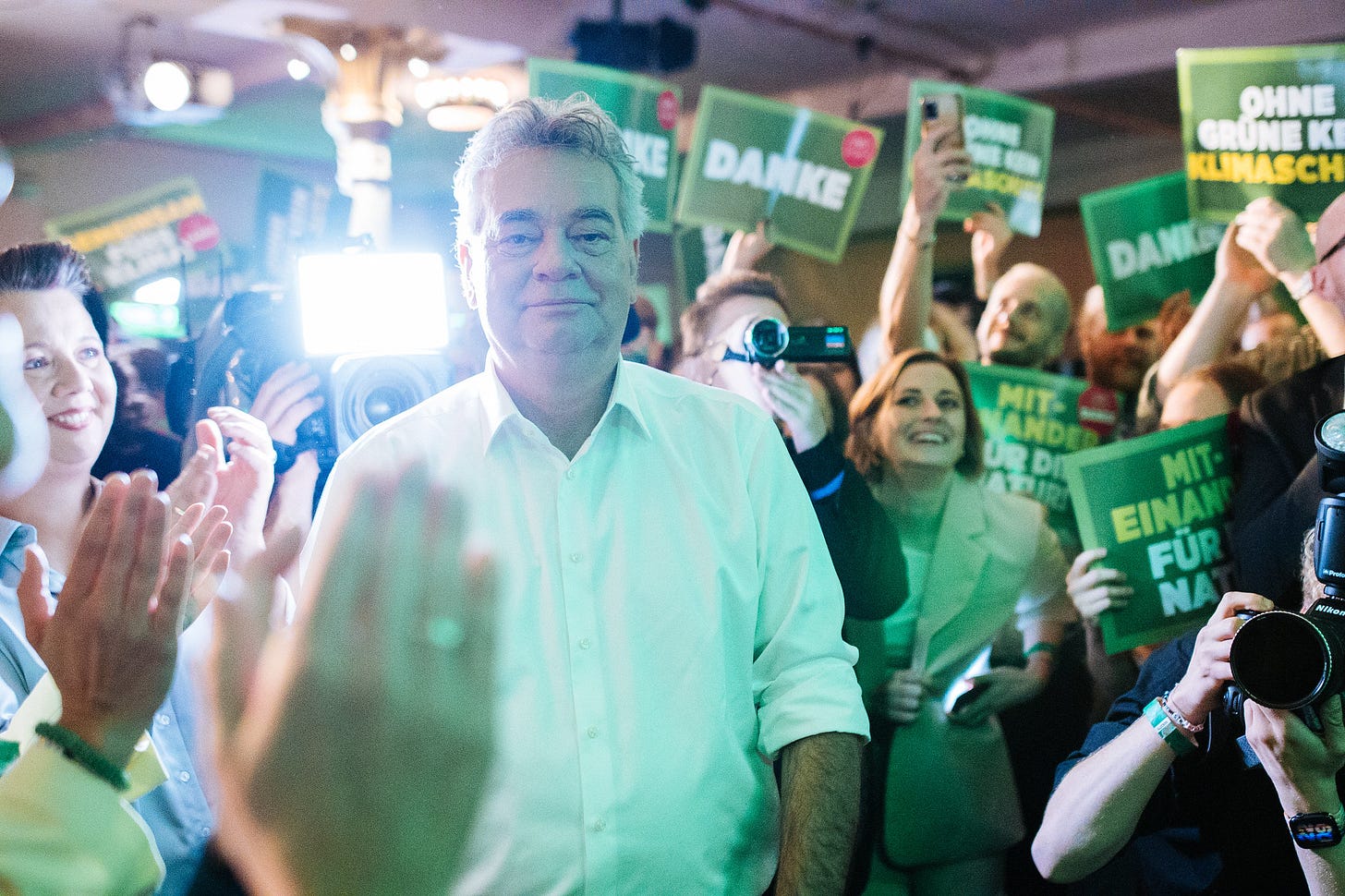Why They Lost
Voters believed Austria was heading in the wrong direction and punished the country's two governing parties accordingly

Servus!
By the time of September 29’s legislative elections, won by the far-right Freedom Party (FPÖ) with 28.85 percent of the vote, 57 percent of eligible voters had concluded that Austria was headed in the wrong direction. This majority is the cleanest and simplest explanation for the punishment doled out to the governing coalition, the conservative People’s Party (ÖVP) and the Greens, by the electorate at the end of last month. The two parties saw their vote shares decline by 11.19 pp and 5.67 pp respectively.
FPÖ voters were, of course, the most likely to believe that Austria was the worse for five years of ÖVP-Green government. Majorities, too, of Social Democratic Party (SPÖ) and NEOS voters agreed with them, but Green voters too were more inclined to say that Austria had gone in the wrong direction (40 percent) over the past half decade than the right one (26 percent). 62 percent of economically active people, 52 percent of pensioners, and 65 percent of people aged 35 to 59 all said Austria was going backwards, creating simply unwinnable conditions for the two governing parties.
In assessing why this government became so unpopular, one has to first acknowledge that it was undoubtedly dealt a terrible hand. Sworn in on January 7, 2020, the first case of COVID-19 was picked up in Austria on February 25, and the country went into lockdown in mid-March. A little under two years later, Russia launched its war of aggression against Ukraine. Combined with the international supply side crisis brought on by the pandemic, the war triggered energy and inflationary crises in Europe. Instability on a global scale led to further waves of irregular migration from the Middle East, north Africa, and the Indian subcontinent to Europe.
This rolling omni-crisis is one reason—if not the principal reason—why the coalition’s economic legacy is a weak one. This year, the Austrian economy is due to contract for the second year in a row, with real GDP expected to fall by 0.6 percent as the country “suffer[s] from the investment slump and weak demand for capital goods and machinery,” according to the Austrian Institute of Economic Research. The budget deficit, meanwhile, has crept above the 3 percent target set down by the European Union’s Maastricht criteria, leaving the next government facing tough choices between tax increases and spending cuts.
The coalition tried a variety of measures to steer against and alleviate the effects of these crises. Its tax reform package lowered rates on lower- and middle-income earners, created a new family tax credit, abolished bracket creep, raised benefits and entitlements in line with inflation, and established the annual Klimabonus. The government subsidized electricity prices, capping them at 10 cents per kilowatt hour, and paid out bonuses of €250 per person to compensate for the cost-of-living crisis. And this is to say nothing of the billions of euros the government spent during the pandemic on short-time work and grants to businesses to keep them afloat.
These measures were, of course, generous and often expensive and can also be said to have contributed to Austria’s current budget deficit crunch. Tax cuts and credits were often not properly balanced and offset, and the Klimabonus cost the government almost €2 billion in 2024 alone. The Klimabonus is a symbol of the coalition’s deficiencies. It was introduced to offset the costs of the government’s tax on CO2, introduced to bring down greenhouse gas emissions, but as voters saw the price of petrol at the pump increase, they failed to make the connection between the one and the other—and the coalition suffered the consequences accordingly.
Bis bald!
Thank you for subscribing to the Vienna Briefing. A personal recommendation is the best way to grow the reader community, so if you know someone who might be interested in this newsletter, consider sharing it with them today.
The Vienna Briefing is a free, reader-supported publication made possible by your generous contributions. If you like and would like to support my work on this newsletter, think about sending me a tip.
ÖVP On Top In Vorarlberg
The ÖVP won state elections in Vorarlberg on Sunday as the FPÖ surged into second place, doubling its vote share in the process. The ÖVP won 38.3 percent of the vote and now must consider if it wishes to continue governing with the Greens or enter into coalition with the far-right.
Three-Party Talks
The leaders of the FPÖ, ÖVP, and SPÖ are set to meet in this week in a series of one-on-one meetings commissioned by president Alexander Van der Bellen. The talks will iron out who is willing to govern with whom before Van der Bellen gives one leader a mandate to begin formal coalition negotiations.
Lamarr Finds Buyer
Vienna’s unfinished luxury department store Lamarr has a new owner: the Austrian property mogul Georg Stumpf. The country’s second-richest man acquired the building site after its previous owner, René Benko’s Signa Holding, went into liquidation at the turn of the year.



